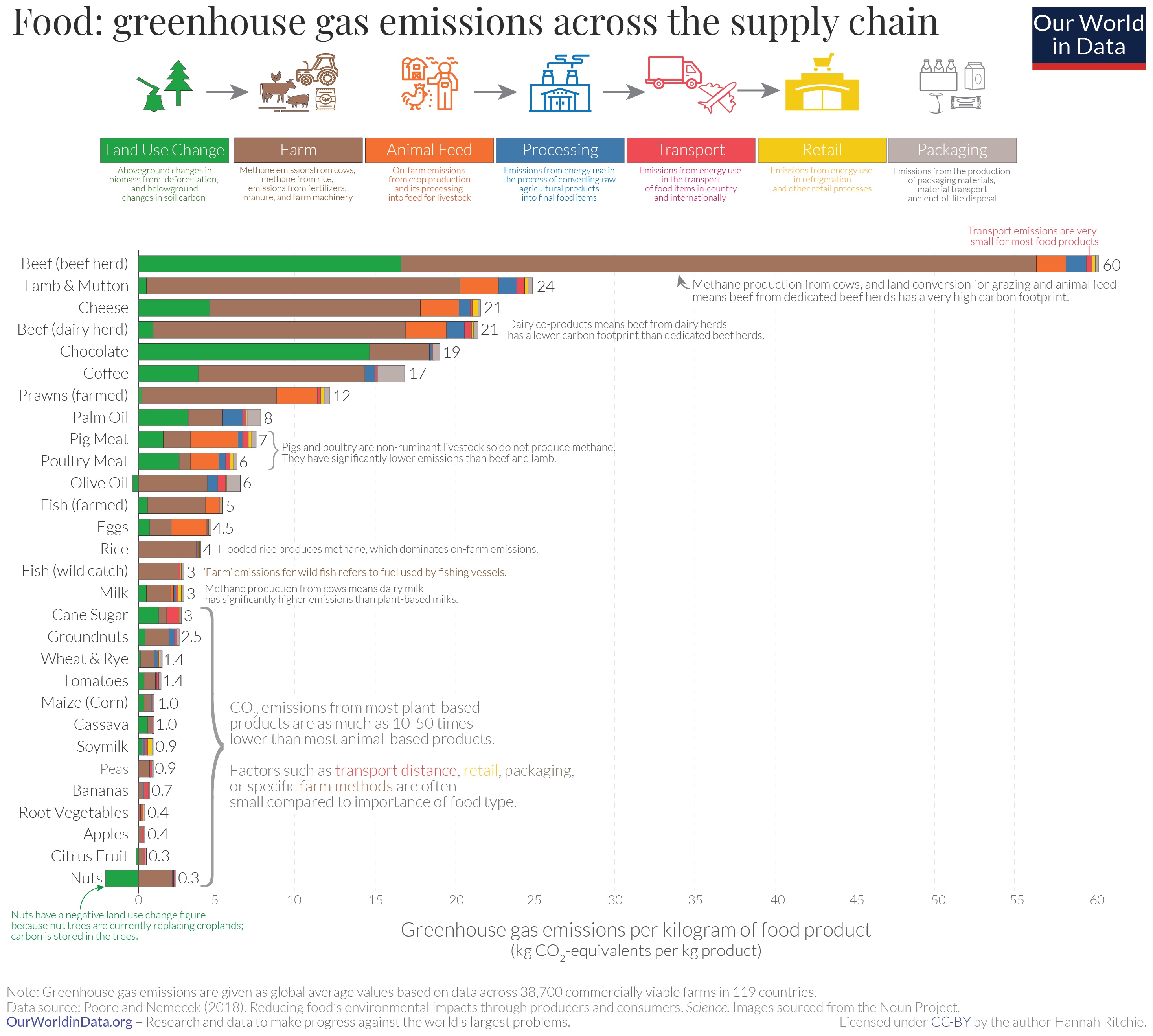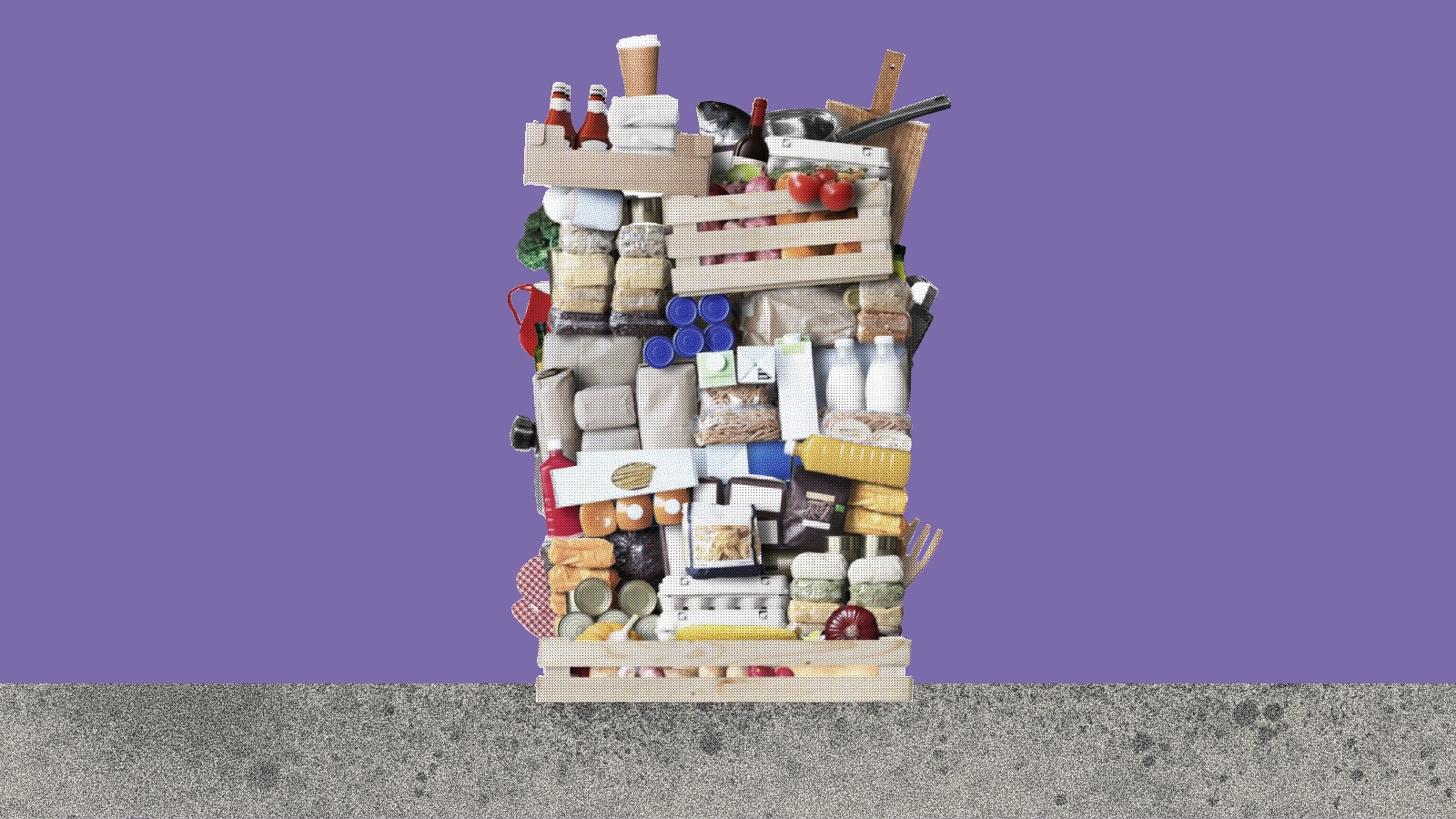Want more sustainable food? Focus on what you eat, not whether it’s local

People across the world are becoming increasingly concerned about climate change: 8-in-10 people see climate change as a major threat to their country.1
As I have shown before, food production is responsible for one-quarter of the world’s greenhouse gas emissions.
There is rightly a growing awareness that our diet and food choices significantly impact our carbon “footprint”. What can you do to really reduce the carbon footprint of your breakfast, lunches, and dinner? “Eating local” is a recommendation you hear often — even from prominent sources, including the United Nations. While it might make sense intuitively — after all, transport does lead to emissions — it is one of the most misguided pieces of advice.
Eating locally would only have a significant impact if transport was responsible for a large share of food’s final carbon footprint. For most foods, this is not the case.
Greenhouse gas (GHG) emissions from transportation make up a very small amount of the emissions from food, and what you eat is far more important than where your food traveled from.
Where do the emissions from our food come from?
The visualization shows GHG emissions from 29 food products — from beef at the top to nuts at the bottom.
For each product, you can see from which stage in the supply chain its emissions originate. This extends from land use changes on the left to transport and packaging on the right.
This is data from the largest meta-analysis of global food systems to date, published in Science by Joseph Poore and Thomas Nemecek (2018).
In this study, the authors examined data from more than 38,000 commercial farms in 119 countries.2
In this comparison, we look at the total GHG emissions per kilogram of food products. CO2 is the most important GHG, but not the only one — agriculture is a large source of the greenhouse gases methane and nitrous oxide. To capture all GHG emissions from food production, researchers express them in kilograms of carbon dioxide equivalents. This metric takes into account not just CO2 but all greenhouse gases.3

The most important insight from this study is that there are massive differences in the GHG emissions of different foods: producing a kilogram of beef emits 60 kilograms of greenhouse gases (CO2-equivalents). In contrast, peas emit just 1 kilogram per kg.
Overall, animal-based foods tend to have a higher footprint than plant-based. Lamb and cheese both emit more than 20 kilograms of CO2-equivalents per kilogram. Poultry and pork have lower footprints but are still higher than most plant-based foods, at 6 and 7 kg CO2-equivalents, respectively.
For most foods — and particularly the largest emitters — most GHG emissions result from land use change (shown in green) and from processes at the farm stage (brown). Farm-stage emissions include processes such as the application of fertilizers — both organic (“manure management”) and synthetic; and enteric fermentation (the production of methane in the stomachs of cattle). Combined, land use and farm-stage emissions account for more than 80% of the footprint for most foods.
Transport is a small contributor to emissions. For most food products, it accounts for less than 10%, and it’s much smaller for the largest GHG emitters. In beef from beef herds, it’s 0.5%.
Not just transport but all processes in the supply chain after the food leaves the farm — processing, transport, retail, and packaging — mostly account for a small share of emissions.
This data shows this is the case when we look at individual food products. However, studies also show that this holds true for actual diets; for example, researchers Vilma Sandström and colleagues studied the footprint of diets across the EU. Food transport accounted for only 6% of emissions, whilst dairy, meat, and eggs accounted for 83%.4
Eating local only slightly reduces your emissions
Eating local beef or lamb has many times the carbon footprint of most other foods. Whether they are grown locally or shipped from the other side of the world matters very little for total emissions.
Transport typically accounts for less than 1% of beef’s GHG emissions: eating locally has minimal effects on its total footprint. You might think this figure strongly depends on where you live and how far your beef will have to travel, but in the box below, I work through an example to show why it doesn’t make much difference.
Whether you buy it from the farmer next door or from far away, it is not the location that makes the carbon footprint of your dinner large, but the fact that it is beef.
Republished under a Creative Commons BY license from Our World In Data. Read the original article.





